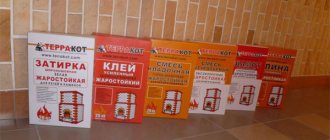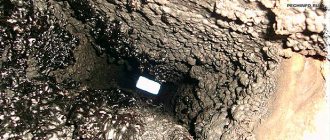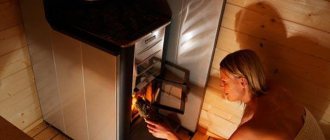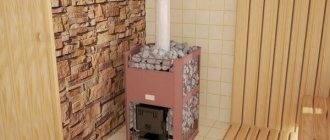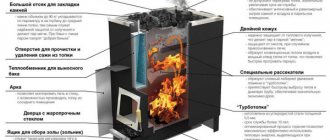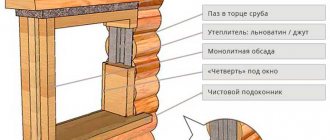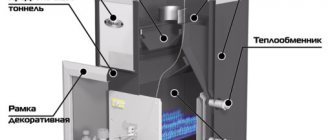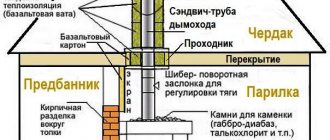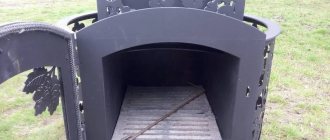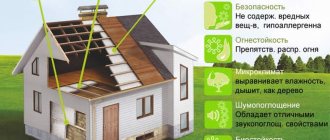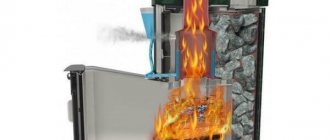Solid fuel stoves are used to heat a bathhouse or a private house. For a long time, the most common fuels were wood and coal. But now more and more people are using their alternative - briquettes.
Briquettes are made from various wood waste (sawdust), straw, peat, and cereal seed husks. Using a press and high pressure, small homogeneous particles are held together and then cut into rectangles or cylinders. The heat output of this type of fuel is significantly higher than that of conventional firewood.
Kindling the bath
Eurobriquettes are a universal fuel; they can be used to heat all types of stoves and boilers. They can be used in outdoor grills and home fireplaces. At the same time, the consumption of fuel briquettes is always significantly less than conventional firewood.
Many people are interested in whether it is possible to heat a stove with fuel briquettes if it is made of steel, like an ordinary heater? This question is quite logical, since such stoves have restrictions on the calorific value of the fuel; you cannot heat a steel sauna stove with black coal, which emits 4900 kcal/kg of heat. But in the case of Eurobriquettes, less heat is released, which means they can be used to heat a stove in a bathhouse.
For a bathhouse, not only the heat generated is important, but also the duration of burning of wood or alternative fuel. The longer the wood burns with maximum heat release, the better it is for the sauna stove and the sauna itself.
Lighting fuel briquettes is not very easy, the fire does not catch immediately, but after they light up, they will burn and smolder for a couple of hours, which is much longer than the combustion of ordinary firewood. Such a long combustion time of fuel briquettes is explained by their high density and low humidity.
Let us note that, according to people’s reviews, you should not completely fill the firebox of a sauna stove with Euro-wood, so as not to quickly reach the maximum heat transfer values.
An interesting point with Eurobriquettes is the residues left after their combustion. Having increased density characteristics, this fuel burns almost completely; it does not leave a large amount of ash, only a small pile of ash. Ash from fuel blocks smells unpleasant, but is an excellent fertilizer.
When Eurobriquettes burn, virtually no smoke is emitted, which is very valuable for maintaining the cleanliness of fireboxes, boilers, and chimneys. According to experts, linden fuel briquettes contain the least amount of resin, so when using such fuel, chimneys and boiler nozzles suffer the least.
Fuel briquettes are an excellent option for lighting a black sauna. As we have already said, this fuel is environmentally friendly, does not emit smoke, provides enough heat, and phytoncides appear in the heated air, which have a beneficial effect on the human body and improve immunity. Using the same linden eurobriquettes, you will feel how your body is healing, inhaling the pleasant aromas of flowers, honey and trees.
Of course, there is also a drawback to this type of fuel - it cannot quickly generate a lot of heat, it releases it gradually. As we have already said, the combustion is uniform, which, unlike firewood that flares up quickly and quickly dies out, allows you to easily maintain the same temperature.
Advantages and disadvantages of fuel briquettes
Let's see what good fuel briquettes are for heating stoves, and what are their main pros and cons. Let's start with the positive features:
You are unlikely to have any problems with storing and storing European firewood.
- Ease of storage – thanks to its neat shape, Euro firewood and other briquettes can be stacked in neat, even stacks;
- High calorific value of fuel briquettes - if we compare them with ordinary firewood, they provide one and a half to two times more heat. Due to this, you can save on fuel when firing stoves and boilers;
- Briquettes are a long-burning fuel for any type of stove. Pressed sawdust burns one and a half to two times longer, reducing the number of approaches for adding new portions of fuel . If there is a regular stove in the room that burns with wood for 2-3 hours, then with fuel briquettes this time will increase to 4-5 hours;
- Uniform burning, without unnecessary noise and embers shooting in all directions. In addition, fuel briquettes used to fire stoves emit less smoke and produce less ash, reducing labor costs for cleaning;
- Low formation of resins - this reduces chimney clogging;
- The storage duration of fuel briquettes for heating stoves varies from 1 year to 5 years - it all depends on the manufacturing technology;
- High environmental friendliness - no chemicals are used in the production of briquettes;
- The volume of briquetted fuel consumed during one heating season is 1.5-2 times less than the volume of firewood used during the same time period.
Fuel briquettes intended for heating stoves burn smoothly and softly, releasing a large amount of heat. They do not clog stoves and chimneys and burn almost 99%.
If your home has a long-burning stove or boiler, then you will experience an additional benefit from using briquetted fuel - the combustion duration will increase by another 1.5-2 times, reaching 12-16 hours or more (depending on the model of equipment used).
Unfortunately, it was not without certain disadvantages:
We do not recommend storing briquettes outdoors; they can become damp and spoil.
- Fuel briquettes used to fire stoves are not afraid of dampness. However, they still do not like direct contact with water ;
- Some types of briquetted fuel do not tolerate long-term storage - their shelf life is limited to one year from the date of manufacture;
- The cost of purchasing fuel may be higher than purchasing regular firewood - it all depends on the manufacturer;
- In some regions and localities, purchasing fuel briquettes for heating boilers and stoves is more difficult than buying a truckload of ordinary firewood;
- The cost is slightly higher than the cost of ordinary firewood. But due to the high calorific value and long combustion, you can save a little.
Despite all this, briquetted fuel continues to gain popularity.
Stove for heating a house
Eurobriquettes are often used for heating houses. One ignition of the stove is enough to maintain the fire for a long time without adding fuel.
To light a brick oven, you must first light the bricks. To do this you will need tree bark, wood chips, and dry newspapers. Fuel should be placed on top of all this
At the moment of kindling, it is important that there is airflow. When the first part of the briquettes lights up, you can add the next batch
There are two ways to fill the stove with fuel briquettes:
- Place the bars loosely in relation to each other. This helps to quickly heat the house.
- Fold the raw materials tightly. This will cause the fuel to smolder, which is a suitable option for heating the house at night. The consumption of fuel briquettes in this case is much less compared to firewood.
Harvesting and storing firewood is more difficult when compared to storing eurobriquettes. The finished compressed raw materials are placed in separate packages, which are wrapped in cellophane. This prevents moisture from entering. Store fuel in utility rooms, basements, sheds or attics. The products are in the shape of tubes or bricks, so they are very convenient to store. Bars take up much less space than firewood.
Conclusion
Thanks to modern technologies, we can use alternative fuel - briquettes. These are compressed particles of various materials. The most common briquettes are made from sawdust, but similar products can be purchased from straw, peat or coal.
With the help of fuel briquettes you can heat a bathhouse, a summer house and a private house. Their main advantages are environmental friendliness and high heat transfer at an affordable price. Disadvantages include the long time it takes to ignite the fuel and the pungent smell of ash, which is uncharacteristic of firewood.
House heating
Fuel briquettes are probably ideal for heating a home. The ability to light the stove once and maintain the fire and heat for a long time without additional tossing allows us to talk about the good characteristics of Eurobriquettes. Let's look at how to heat a brick stove with fuel briquettes within the house.
What is better to choose regular firewood or “euro”?
The main problem associated with biomass gasification as an electricity generation technology is the purification of the gas resulting from the process of impurities that accompany it. Gasification has a number of advantages. The resulting gas is more versatile and can be used for the same purposes as natural gas.
It can be burned to produce heat and steam and can drive internal combustion engines and gas turbines to generate electricity. These processes use the biochemical characteristics of biomass and the metabolic action of microbial organisms to produce gaseous and liquid fuels. They are more suitable for wet biomass conversion than thermochemical processes.
Of course, pressed bricks will not burn immediately, so let’s figure out how to light fuel briquettes. This is quite simple to do; first of all, you should put tree bark, wood chips, and some dry newspapers in the oven, and then place alternative firewood on top. During kindling, while the wood chips are actively igniting, we adjust the airflow. As soon as the fire starts on the first briquettes, you can add the rest.
Digestion of biomass soaked by bacteria in an oxygen-free environment creates a flammable gas called biogas. In this case, the biomass is placed in a closed container and allowed to ferment; After a few days, depending on the ambient temperature, there will be a gas that is a mixture of methane and carbon dioxide. The remaining material in the digester is a good organic fertilizer. In China and India, digests were intensively promoted for domestic use when replacing firewood.
So which is better?
Black water and honey can also be used as raw materials, which also serve to purify water. Biomass can produce liquid fuels such as ethanol and methanol. The first is produced by fermentation of sugars, and the second by destructive distillation of wood. The technology has been used for centuries to produce alcoholic beverages and, more recently, to replace fossil fuel substitutes for transportation. These fuels can be used in pure form or mixed with others, for transportation or for driving cars.
Another option is to heat the stove with fuel briquettes after the first batch of wood has burned and decent coals have appeared. In such a firebox, the fire can quickly be caught on Eurobriquettes.
General information
Fuel briquettes, or Eurofirewood as they are also called, are made from pressed natural materials, most often sawdust, sometimes peat or straw. During the pressing process, most of the moisture is removed from the wood, which makes it possible to obtain high calorific characteristics. Unlike firewood, whose maximum dryness is determined by 20% humidity, the same parameter for fuel briquettes is 8-9%.
The design of briquettes can be different:
- Eurobriquettes RUF - made exclusively by pressing without additional processing.
- Eurobriquettes Pini-Kay are compressed sawdust fired with a gas-air mixture to create a more durable shape, which increases storage time and protection from moisture.
Regardless of the type of fuel briquettes, their density is higher than wood, which allows them to burn well and release a large amount of heat. Thermal characteristics differ for Eurobriquettes made from different materials; usually high-quality types of wood, cereal seed husks, straw, and peat are used.
Direct use of fuel blocks
In the production of Eurobriquettes of all types, no adhesive additives are used, since wood and similar materials contain a suitable component, lingin, which can glue all the sawdust together.
Due to the fact that fuel briquettes are made from drier wood, their calorific value is significantly greater than that of ordinary firewood or brown coal and is remotely comparable to the characteristics of black coal. For example, dry birch firewood emits 2500 kcal/kg when burned, brown coal about 3800 kcal/kg, and fuel briquettes 4500 kcal/kg. Thus, for heating premises, the option with such fuel is quite acceptable, but are fuel briquettes suitable for a bathhouse, is it possible to heat a stove in it using this fuel.
Fire wood stoves
Wood-burning stoves provide efficient heating of residential and non-residential premises. They are presented in many models, differing in their technical characteristics and design. They use the most ordinary firewood as fuel - they can be purchased by the truckload. But this fuel cannot be called modern and efficient. And today it has been replaced by fuel briquettes for heating stoves.
To clarify, let's look at the main disadvantages of traditional wood fuel:
Ordinary firewood must first be chopped and then placed in neat woodpiles. This is a very labor-intensive and time-consuming process.
- It is inconvenient to stack firewood in neat stacks - if they are the same size and format, then this is not so bad. But if some logs are thin, while others are thick, and even knotty, then the masonry will be crooked and oblique (although a lot here depends on the “curvature” of the hands);
- Firewood needs to be split - it often comes in the form of round logs that require chopping. Swinging an ax in cold weather is a dubious pleasure (although useful);
- Firewood is often damp - seeking for their own profit, lumberjacks sell the wood in a raw state, without first drying it. Compared to almost dry fuel briquettes for heating stoves, they will not be easy to light;
- Low calorific value - a cubic meter of firewood produces less heat than the same wood briquettes of the same volume;
- Firewood produces a large amount of ash - the same wood briquettes practically do not clog the stoves;
- Wood burns with clicking and crackling sounds, burns unevenly, clearly inferior to briquettes in this regard.
Firewood is the most common and cheapest solid fuel for heating stoves and boilers. But fuel briquettes are superior to them due to their convenience and high calorific value.
What are fuel briquettes made from?
Wood fuel briquettes are made from wood waste - roughly speaking, it is pressed sawdust that has undergone certain preparation. The preparation process includes grinding and drying. As a result, raw materials are born, ready to go under the press. Some sawdust does not need drying at all, since it is almost dry.
Most often, this type of fuel is produced from ordinary sawdust.
Safe organic compounds act as binders in fuel briquettes for heating stoves, and some types of Euro firewood are made without an adhesive base . The harvested raw materials are sent under the press, forming dense, neat bars, ready for further use. Firing can be used as an additional processing - it all depends on the manufacturer and the technologies he uses.
The resulting wood briquettes for heating stoves are sent to consumers - they are suitable for heating houses and non-residential buildings, and are used to light fireplaces. They can also replace firewood for a picnic, but in this case you will not hear the sound of crackling firewood. But you will get an even flame, without flying embers and sparks.
Useful tips
Those who want to make such a product with their own hands must consider the following points:
- To make the elements burn better, you can add a little paper torn into pieces.
- All elements will stick together better if you add starch to the mixture.
- In order to effectively burn small wood waste when producing such fuel, it is worth using a special shaft-type boiler. It is also important to remember that homemade presses are of lower quality.
Price
| Types of briquettes | Material | Price for 1 ton (rub.) |
| Pini-kay | from pine needles | 8900 |
| birch | 9500 | |
| RUF | from sawdust | 6500 |
| from ancient flour | 7500 | |
| from pine needles | 6000 | |
| from pine and birch | 6500 | |
| birch | 6900 | |
| Nestro | 7500 | |
| Pellets 6-8 mm light | 8800 | |
| Pellets 8 mm gray | 8000 | |
| Peat briquettes | 7000-9000 | |
| Coal | 8000 | |
| Coal briquettes | 9500 |
